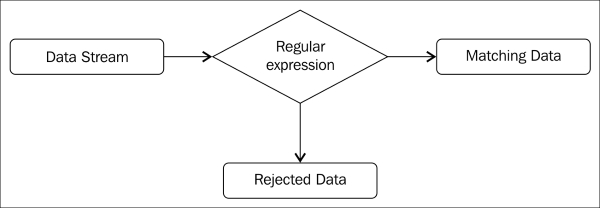A sequence of characters that have certain patterns of text (with meta-characters), which will be searched from in a larger text or file is called regular expressions:
$ ll /proc | grep cpuinfo
In the preceding command, the grep utility will search for the cpuinfo text in all lines of input text and will print lines that have the cpuinfo text.
The utilities such as grep, sed, or awk use regular expressions for filtering text and then apply various processing commands as required by the user. The lines which do not match the pattern will be rejected. The following diagram explains the same concept:

In Chapter 3, Using Test Processing and Filters in Your Scripts, you learned about the basics of regular expressions and pattern matching using the vi editor and the grep utility.



